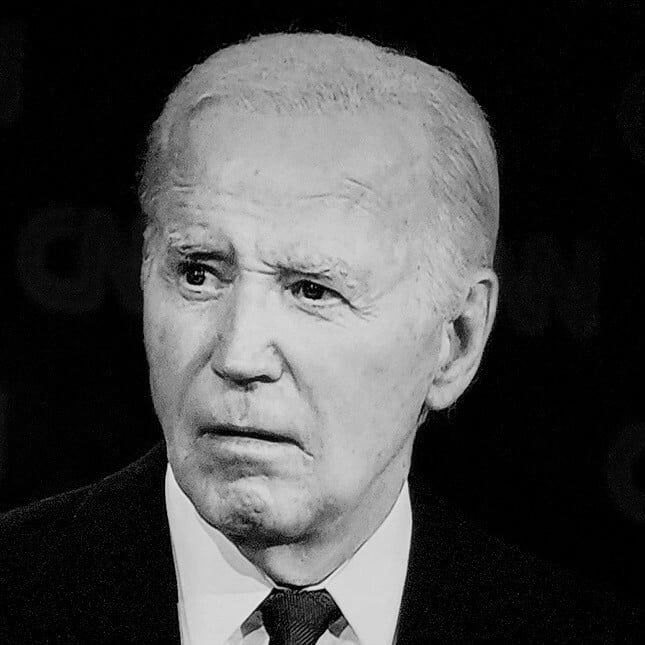- cross-posted to:
- politics@lemmy.world
- cross-posted to:
- politics@lemmy.world
Requiring the installation of analog AM radios in automobiles is an unnecessary action that would impact EV range, efficiency, and affordability at a critical moment of accelerating adoption,” said Albert Gore, executive director of ZETA, a clean vehicle advocacy group that opposes the AM radio requirement.
I cried. They install like big screen TVs now instead of console with buttons and it is the radio which is expensive and eats the battery?! Please note, an amplifier and speakers are already in the car, so they just talk about the radio receiver, which in old days could run couple of days or more with AA batteries.
They are lying through their teeth
It’s probably because am radio hurts their profit somehow
Fuckers can design in an option to turn the hardware off when not in use and use more power efficient components and programming
They have to put more shielding around the motor so it doesn’t leak a bit of electromagnetic, because they can interfere with the Am radio. And shielding costs money and weighs a bit more. So they rather not have a built in electromagnetic radiation detector.
There was an arstechnica piece that was a bit sooner (it’s passed the house). They said 82 million people “use AM radio”. (Most of that is probably while driving.)
The argument for it is basically, that AM-radio listeners are declining and that means stations are closing up. If they remove them, AM radio peeps “loose” the largest segment of their audience.
The “concern” is that the public warning system relies on 77 of the 4.5k stations to broadcast warnings.(emergency and weather/hazard radios)
The issue here is that it’s basically bullshit. They could just buy the towers as a stop gap until better systems come into play. (Though to be fair, as old as it is, it’s pretty much the best for that kind of alert. Might be permanent.) and its really doesn’t matter- AM radio is dying; at least as entertainment ornmews services.
I think it would be very difficult and very expensive to build enough towers to cover states like Alaska. A lot of people listen to AM radio there.
I’m guessing people will just start putting separate radios in their cars and use a bluetooth connector or something.
I’m guessing people will just start putting separate radios in their cars and use a bluetooth connector or something.
That’s fine and all, but it will just become a hobbyist thing like CB Radio…
And since funding for NPR has been significantly cut again and again by Republicans over the past few decades and is propped up almost entirely by listener contributions, it wouldn’t last a year without mandatory AM radios in cars.
I enjoy listening to NPR while I’m driving, but I doubt I would go through the trouble of buying a separate radio to keep sitting on my passenger seat or something?
And hey, guess who produces all of your favorite podcasts? That’s right, NPR.
NPR is on FM, too, and, uh, they’ve transitioned to streaming by webcast or app.
(They’ve had NPR One one for years, there’s a new NPR app that’s out to replace it.)
Like the idea of the app - hate the idea of the analytics from the app.
Like the idea of radio where there’s no analytics to collect.
Podcasts aren’t going to give you the latest news. Especially not the local, regional and state news that local public radio stations provide. Information you might want to know in a disaster in a place where FM radio might not reach.
NPR is on FM too.
You can make an AM radio with a fucking potato. What a joke.
The issue is the motors generate EM emissions that interfere with AM reception. To still have AM, they have to add shielding, which adds cost, as well as weight that will reduce range and efficiency.
An AM radio receiver would easily fit in the palm of your hand. You could shield it with material that weighs no more than a pound.
Taco Tuesday will have more impact on your EV range.
You can’t just shield the radio. That’s not where the antenna is. You have to shield the electrical components generating the interference.
OK, it might cost a bit to install shielding, but it is not like a heavy thing - for AM can be done with metal net with rather large cells, which weights nothing and requires zero additional power.
Hell, the off-the-shelf radio-on-a-chip components they use in their stereos probably already have the physical capability of receiving AM radio; but I’m willing to bet the motors or some other component produces interference that would be difficult to engineer around.
… said Albert “Don’t call me Al” Gore…
But you called me Betty!
Al Gore seems like he might be a moron if he is dumb enough to believe what he said.
For anyone else who wondered the same, this Albert Gore is not the Al Gore.
Yeah, the name made me do a double take. Al Gore seems to be a decently intelligent dude. Al Gore (the one at Zeta) not so much.
In a different thread on this same topic, I posted some technical information relevant to AM and FM radio, trying to bring a bit of technical nuance to the discussion, from my background as an amateur radio hobbyist.
The short version is: People talk about AM having longer range both during the day and especially at night, when really it has more to do with the wavelength than the modulation scheme. The commerical AM broadcast band is transmitted at a wavelength of ~200 meters, which has both groundwave and skywave propagation properties, where commercial FM broadcasts at a wavelength of ~3 meters which is strictly line of sight. The real relevant detail is MF vs VHF, not AM vs FM.
The modulation scheme matters with the construction of the radio itself. AM radio predates WWI, and a functioning receiver can be improvised out of literal junk you find lying around. Consumer AM radio receivers have been in production for a hundred years, and the AM broadcast band is kept deliberately primitive to maintain compatibility with those ancient radios. VHF FM radio is about 50 years old, and though it is a bit more technically advanced also goes through some pains to remain compatible with radios made during the Ford administration. Both technologies are older than the majority of Americans today and have functionally “always” been here.
In the other thread, I didn’t get around to this part: Is MF AM broadcast radio a good technology for “emergency communication?” Maybe. Depends on the emergency, depends on the information, depends on the audience.
If we’re talking about information of interest to motorists, AM radio isn’t a terrible choice because the vast majority of cars built in the last 70 years have AM radio receivers. Same could be said of FM radio; you can reasonably expect the average car on American roads to have an FM radio. A lot of people tout the superior range of MF over VHF. For traffic, road closure and weather advisory, how much range do you really need? If the message is something like “Interstate 40 Westbound between mile marker 76 and 81 is out of service due to road construction. Follow detour marked by signs from Exit 75. Delays of up to 45 minutes expected during peak traffic times.” You might want to deliberately limit the range of that signal because it’s a waste of spectrum to broadcast that message from Tennessee all the way up to West Virginia, a state that has no I-40 in it at all. Mind you, not all motorists are able to receive either one. Some cars, and nearly all motorcycles, have no AM or FM radios. Things like road closures, detours and such should be 100% navigable by signage alone.
If we’re talking about weather alerts, the NWS maintains a network of VHF FM transmitters called the National Weather Radio or NWR that transmit on one of seven channels around 162 MHz with weather observations, forecasts and warnings. They have a technology that transmits a code that can automatically turn on radios for severe weather warnings. These transmit with a power of 5 to 1,000 watts, and there’s about 1,000 of them dotted around the country. I’ve been spending the last day saying to myself “Yeah, why don’t all car stereos have NWR receivers in them?”
General emergency things, like widespread natural disasters, civil emergencies, national security emergencies etc. are perhaps a different story. If there’s a hurricane or something, the ability for one station in Tennessee to broadcast to the entire Eastern seaboard could come in handy. Temper this with the idea that they might only reach the Outer Banks or Savanna Georgia or Rhode Island at night.
Something to consider though is do 21st century people “have” AM radios? Sure, every alarm clock, boom box and walkman have AM radio tuners…but how many people these days actually have those devices? Search on Amazon for “boom box.” They’ve gone out of fashion. Especially for younger folks tend to use their cell phones as alarm clocks and music players. I bet there’s a lot of households nowadays that don’t have a working AM radio, in the same way that they probably don’t have cassette players or VCRs. I imagine a large swath of the population whose only functioning AM radio they own is in their car stereo, and I imagine they never use it. Outside of Rush Limbaughs audience, who listens to AM radio these days?
It is a bit of a problem, actually. Up until the 90’s, you had AM, FM and TV. You didn’t have to worry about congestion on these platforms, so the normal stations people listened to or watched could be redirected to emergency broadcasts. That has changed. As noted, who listens to the radio? We all have Spotify or Apple Music. Who watches “television?” We all cut the cable for streaming services delivered via the internet, who has a set of rabbit ears hooked up to their TVs anymore? We’re all used to getting information from our cell phones, which are nearly useless during a widespread power outage because everyone suddenly hits the cell towers slowing everything to a useless crawl.
Hell, winter before last there was a weather related power outage. Normal stuff, ice took down some power lines. My local FM radio station stayed up under generator power, and they were trying to broadcast a press conference with the governor…but couldn’t because their downlink from the state capitol was through Facebook and the internet wasn’t working correctly. They had no microwave relay or satellite uplink or whatever, they were trying to stream audio from the state capitol, across the internet via Facebook, then over the air via FM. This is the state of emergency communications in 21st century America.
Is mandating car stereos have AM receivers the solution to that problem? I’m not so sure; is it the Republicans just want to keep their rage bait shit on the air? Prolly. As I said it would be much wiser to mandate NWR receivers in new vehicles.
Alternatively, since most modern day vehicles come with satellite radio standard, they could just make it a requirement that satellite radio broadcasts emergency messages on their preview channel during an emergency.
The issue is many emergency broadcasts will have location specific information, while satellite will be the same message nationwide.
But it’s still a dumb mandate. Not everyone has cars. I keep an emergency radio (which also receives weather and several short wave bands) for emergencies.
I’ve heard worse ideas.
FM is more affected by physical barriers (buildings, etc.). Range is around 30 miles. AM range is around 100 miles during the day and further at night.
Don’t states with frequent hurricanes still recommend switching to AM in the event of disaster? There are a lot of situations where cell phones or FM may not work, but you could get an AM signal.
See this comment: https://sh.itjust.works/comment/11323676 on an alternate thread to this same discussion which gives a great run down of AM & FM radio systems.
Would be nice if phones came with am/fm radios built in
It’s a shame that they took out this feature from smartphones when they killed the aux jack
They used to, back when we lived in a real society
I’m not sure what people would do with normal radios, but people in a severe weather area might own a weather radio that gets alerts from NOAA, and that’s on VHF, though they usually have AM/FM as well. I lived in tornado alley for a while and yeah, we would listen to whatever we could receive (FM in more populated areas, but AM when way out in the sticks) and we had a NOAA radio too.
Can’t have right wing talk radio cut off at the knees. Considering the interference generated by electric motors, I look forward to the added expense in EVs to add a feature I will never use.
Unless there’s an emergency.
The way I read it, this is ensuring everyone has the most effective analogue radio in their car because that’s how emergency broadcasts would go out. Seems sensible to me.
To be fair the law seems to require it be done at no extra cost to the consumer, but I’m sure they’ll find something else that suddenly becomes much more expensive to install than it was before.
Drivers Seat $10,000.
The tech is so old I can’t imagine it realistically costing much.
It’s the fact that you can’t just slap it in there that is the issue. The electric motors interfere with the AM signal. That’s what’s been argued to be complicated and thus expensive.
There are also AM NPR stations (I wasn’t aware of this myself until a few days ago), especially in large states with small populations like Alaska.
I listen to NPR, and not requiring AM radio in cars would literally (or “finally” if you’re an idiot conservative) kill the National Public Radio system for good.
The vast majority of NPR broadcasts on FM: https://en.wikipedia.org/wiki/List_of_NPR_stations
I’ve run out of free articles. Can someone please post the article?
This story originally appeared on Ars Technica
Looks like you can read the article, without a paywall, here: https://arstechnica.com/cars/2024/05/am-radio-is-a-lifeline-lawmakers-say-tech-and-auto-industries-disagree/
Open in browser, enable reader mode, (likely on the right side of the address bar)
I’m ok if this requires better EM shielding of electric vehicles. RF bands are a natural resource, and we should prevent short term profit-seeking from shitting them up.
What would nuclear Armageddon sickos do then?
AM radio is great at programming people
Why do you say that?
The problem is AM radios in electric vehicles. AM radio picks up interference from electricity, as most people who listen to AM radio and have driven under high power lines already know.
So electric car manufacturers want to sub in FM/Bluetooth radios instead.
You want your AM radio trash? That’s what “I Heart Radio” is for.
The issue is that AM radio is far more reliable in an emergency:
in a true emergency, seven former FEMA administrators wrote in a letter to Secretary of Transportation Pete Buttigieg, the signals that power AM radio are more reliable than FM, phone service, and internet connection. Most of the 75-odd stations with backup communications equipment and generators that allow them to broadcast in a crisis are AM stations, and AM radio covers 100 miles or more, far more territory than FM or any other widely accessible alternative. Source
Not if your car literally produces interference to AM signals
For the 1% of people who look to AM for emergency information. ;)
The idea is that AM is more rugged, it’ll be up when other more common forms of emergency communication is down. Internet and TV are both fragile, relatively speaking. FM covers less range. So yeah, while few people use it actively, when a true crisis hits, it’s nice to have a stable fallback. ;)
You live in Hurricane territory you know exactly what channel it is
Sorry to busy drinking to worry about using a radio.
Live through one category 5 hurricane then get back to me about how tough you are big guy.
Hurricane party time?
The problem is AM radios in electric vehicles. AM radio picks up interference from electricity, as most people who listen to AM radio and have driven under high power lines already know.
Not just EVs. When I drove a 2003 Civic Hybrid AM radio was worthless there too. So its:
- Hybrids
- Plugin Hybrids
- BEVs
- Hydrogen fuel cell vehicles too?
So anything but ICE. So all the cars that offer any kind of better environmental impact that full ICE have trouble with AM. I don’t think AM is worth it for that.
If the justification is that AM radio is useful in emergency scenarios, the sound quality is largely irrelevant. As long as you can make out instructions and warnings that might be given after a disaster (such as “Avoid area A due to flooding”, “Heated shelter available at schools”), then it’s serving its point. Whether it’s good for music or talk shows isn’t the point here.
It’s also the fact that if everyone stops using AM, the RFI pollution from EVs and other tech will balloon even more than it already has. Those frequencies are used for a lot more than just emergencies. I’d bet the push for this came from the military or the FCC.
If the justification is that AM radio is useful in emergency scenarios, the sound quality is largely irrelevant.
Then the electric motor was running on my Civic hybrid (accelerating or braking), the only thing you’d hear on any AM station was “BRRRRRRRRRRRRRRRRRRRRRRRRR!”. Not a single word spoken or note of music was intelligible.
AM would work okay when the car was not driving. If lawmakers want to legislate a radio that only works when the car isn’t moving, I suppose they can. It just doesn’t seem very useful to me.



















